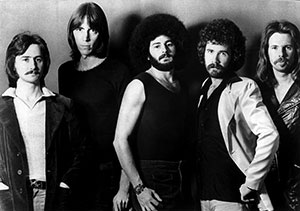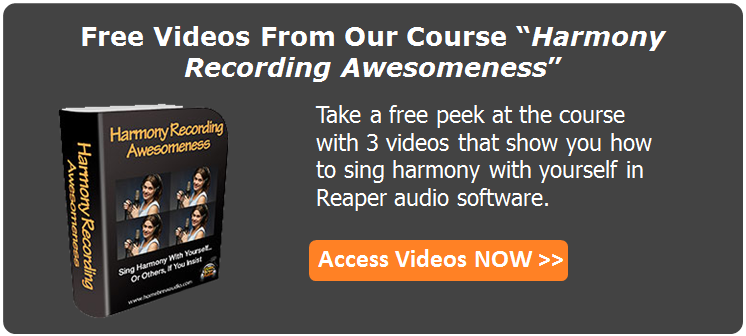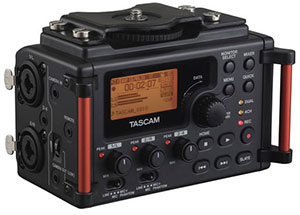 I found something amazing on YouTube yesterday. Someone posted the audio (no actual video, just a static picture) of ONLY the lead vocal tracks from the 1976 Boston hit, “More Than a Feeling.” I’ve have always been a huge fan of lead vocalist Brad Delp (may he rest in peace), and to be able to hear what he sounded like without all the music on a song I’ve known most of my life is a real treat.
I found something amazing on YouTube yesterday. Someone posted the audio (no actual video, just a static picture) of ONLY the lead vocal tracks from the 1976 Boston hit, “More Than a Feeling.” I’ve have always been a huge fan of lead vocalist Brad Delp (may he rest in peace), and to be able to hear what he sounded like without all the music on a song I’ve known most of my life is a real treat.
But the thing I wanted to point out was the sound of a “doubled” lead vocal. I talk a lot about vocal doubling in both of our courses, “The Newbies Guide to Audio Recording Awesomeness 1 and 2.” It was pioneered in pop music by the likes of Les Paul and Buddy Holly as a means of making a single voice sound richer and “thicker.” It was also something the Beatles did a lot in the studio, to the point that an actual process was developed by Apple Engineer Ken Townsend at the request of “the lads” so they didn’t have to actually sing a part twice. (Trying to match the timing of the original track can be time-consuming.) That new process was called automatic double tracking, or ADT for short. I still think the original method of just singing a second track along to the first track – singing the lead vocal part twice – is a great (not to mention cheap :)) way to double a vocal part.
In the video below, you can hear what vocal doubling sounds like on Brad Delp’s voice. The recording also has the harmony parts on it, and those are not what I’m talking about; I am referring only to the “apparent” sound of Brad’s voice singing alone on the verses without the harmony – for example, “I woke up this morning and the sun was gone,” etc.
I cannot say with absolute certainty whether this recording was made by having Brad sing twice or if it was done via a doubling effect, but IF I had to guess, I’d bet he sang twice. He was used to singing along with his own voice, since all those harmony parts were also sung by Brad Delp. You didn’t think Boston had that many actual singers did you? :). Actually, they would sometimes hire extra singers to sing the harmonies in the live shows.
Without further ado from me, listen for yourself below:
Archives for October 2014
Sale On Halloween Sound Effects and Music
 AudioMicro is having a promotion for Halloween sound effects and/or royalty-free music.
AudioMicro is having a promotion for Halloween sound effects and/or royalty-free music.
These are perfect for using in your Halloween videos, productions or haunted houses. Or just play them on your front porch or out the window to add to the spook of your house for all the trick-or-treaters:).
CLICK HERE for Horror Sound Effects. Then get 20% off by entering promo code halloween2014 at checkout!
CLICK HERE for royalty-free Halloween Music, and do the same as above – put halloween2014 in for the promo code at checkout.
Sam Smith Sings Harmony With Himself In Stay With Me
Sam Smith’s song, “Stay With Me,” is a huge hit in 2014. We were just watching a segment about him on CBS Sunday Morning and heard something fascinating. In the chorus of the song, the harmony makes it sound like Sam is being backed up by a full choir.
But it’s no choir! Sam actually recorded himself 40 times!
This Is Why I Learned Audio Recording
I talk about this kind of thing all the time. That’s because the ability to sing harmony with myself is why I got into audio recording in the first place. And it is easier than ever before for anyone to do it on their computer through a process called “overdubbing.”
You can do this with any software that allows you to do multi-track recording, even the free program, Audacity. In fact, the below video – an excerpt from our tutorial course, The Newbies Guide To Audio Recording Awesomeness 1: The Basics With Audacity – shows you how to do overdubbing to sing harmony with yourself, even with no budget for gear (maybe $5.00 for a PC microphone to get started):
That demo was just 4 versions of you. If you want to do what Sam Smith did, it isn’t very hard at all. Just sing like him and sell millions of recordings;-). Oh, the harmony thing. Yes. All you need to do is to follow the instructions in the video…multiplied by 10!
In the interview, Sam said a lot of people think he hired a gospel choir to sing backup on the song. He said that actually upsets him a bit. “I want the credit,” he said with a smile.
[UPDATE]: Since I wrote this article, I have created an entire course dedicated to singing harmony with yourself – or other people too (if you must :)). the course is: Harmony Recording Awesomeness.
So now you, too, can go forth and overdub yourself into a choir.
For more information on singing harmony with yourself, see our page: Sing Harmony With Yourself – Learn How to Record Your Voice on Your PC and Sing Along With It!
And if you’d like some free videos from our course, Harmony Recording Awesomeness…

New Portable Audio Recorder For DSLR Video Shoots

The Tascam DR-60DmkII 4-Channel Portable Recorder has just been released and is perfect for recording high-end audio while shooting video. The product description says that it caters to the needs of DSLR (“digital single-lens reflex,” or just “digital SLR”) cameras. But it will work great for any video recorder, of course.
So what makes the DR-60DmkII so awesome? Lots of things. But that’s not very helpful is it? OK, let’s start with the important thing. It allows you to record very high-quality audio so your videos can sound professional, which is something that is lacking in so many videos these days. Just about every day I see a video that looks great, but sounds awful. You can solve that problem with this recorder.
The DR-60DmkII captures audio up to 24-bit/96 kHz WAV/BWF (broadcast wave format) files. It also has 4 audio input jacks – 2 combination XLR/TRS for standard microphones, and 2 1/8″ (3.5 mm) input plugs. You can record 4 audio sources simultaneously (which is better than typical home recording audio interfaces, I might add). It also has built-in phantom power (for your highest quality microphones), A-D converters and mic preamps.
A few other things worth knowing about:
- Attaches to a tripod and has a tripod screw on top of it so you can attach your camera on top of the recorder.
- Slate tone generator for easy track marking when shooting, and easy recognition
- Multiple stereo outputs allow you to monitor the audio in headphones as well as send reference audio to your camera (assuming it has a microphone jack)
- Built-in Mixer allowing you to control over panning and levels for each of the 4 tracks.
- Records onto SD/SDHC up to 32GB
I had not looked at the price of this recorder while writing about it. In the back of my mind, I was expecting it would be somewhere between $500 and $1,000. I’ve seldom been so happy to be wrong:). This awesome piece of kit costs only $199.99!
There are a lot more features on this incredible new device, which you can read about in the more detailed description. CLICK HERE to go check those other details out or to order one of you own.
